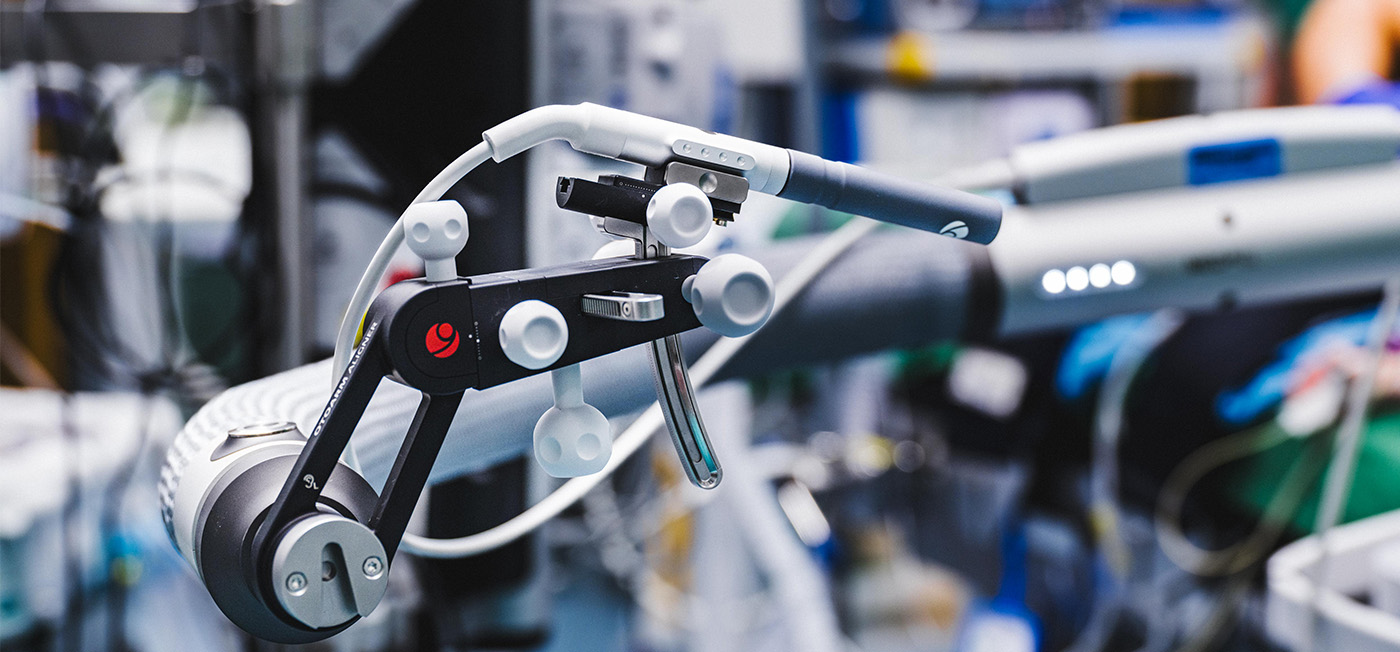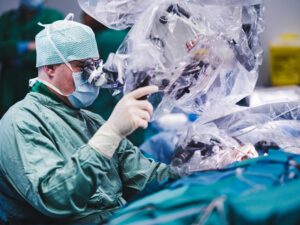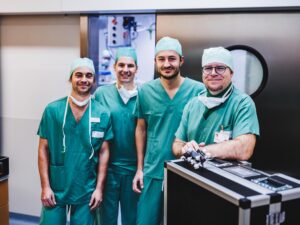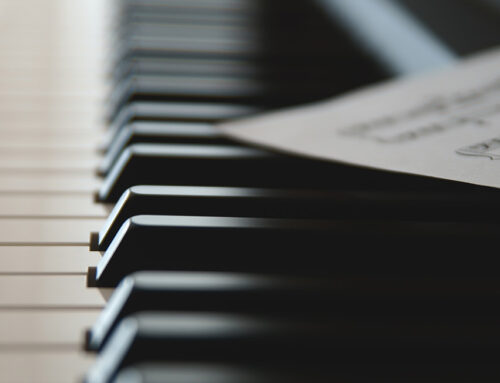High-precision instruments for gentle cochlear implantation
With the new OTODRIVE – OTOARM system, the insertion of cochlear implant (CI) electrodes is performed automatically, with precision and exceptional care — improving the preservation of residual hearing even further. Lifelong Hearing had the opportunity to witness the use of this cutting-edge technology in Linz.

It’s just before eight in the morning. The operating room at Kepler University Hospital Linz is being prepared for the first procedure of the day. The room is spacious, with smooth white walls. Tweezers, drills, scalpels — all the surgical instruments are neatly arranged on metal trays covered with green sterile cloths. Bright yellow, blue, and black stools line the edges of the room.
The focus today is on the young patient lying on the operating table. The child is scheduled to receive cochlear implants in both ears. At Linz University Hospital, this has been a routine procedure for many years. Dr. Paul Martin Zwittag, head of department, and his team are recognized experts in the field of CI surgery.
Still, today’s operation is special — as indicated by the large metal case waiting in the anteroom. It's big enough that the small patient could almost fit inside. Inside the case is a new surgical tool: OTODRIVE, designed to enable slow, steady, and highly precise movements — exactly what’s needed for gentle insertion of CI electrodes. The OTOARM is mounted to the operating table and holds OTODRIVE in place. With OTOARM, the surgeon can precisely position the tool while eliminating the subtle tremor that even the steadiest human hand cannot avoid.
A deaf ear is not a dead ear

Primarius Dr. Paul Martin Zeittag: "Slowly controlled insertion is the best way to preserve residual hearing and preserve the anatomical structure of the auricle." ©Michal Gajdos
Even in cases of severe inner ear hearing loss, the cochlea contains delicate, living structures — some as fine as a fraction of a human hair. Preserving these structures improves the chances of retaining residual hearing and leads to better hearing outcomes with a CI.
The design of the CI electrode plays a crucial role in protecting these structures — which is why Austrian manufacturer MED-EL places great emphasis on producing atraumatic electrodes. But the way the electrode is inserted — especially the speed and the path — is equally critical. The new precision tools, developed jointly by MED-EL and Swiss company CASCINATION, are designed to assist surgeons in this delicate task.
OTODRIVE is compact, just over seven centimeters long and weighing only 30 grams. Surgeons maintain full control over the insertion process using a foot pedal and corresponding software. The insertion speed can be finely adjusted between 0.1 and 1 millimeter per second. At the slowest setting, it takes nearly five minutes to guide the approximately 30-millimeter electrode from the cochlear opening to its final position. No matter how experienced, a surgeon cannot guide an electrode this slowly, steadily, and gently by hand.
The Future of Surgery: Precision Meets Robotics
OTODRIVE and OTOARM were officially presented as approved medical devices in Austria at the ENT Congress in autumn 2024. There, attendees had the opportunity to test OTODRIVE on an ear model. Currently, three Austrian university hospitals — in Vienna, St. Pölten, and Innsbruck — are participating in a scientific study using OTODRIVE for cochlear implant surgeries. Early results from this study were shared at the congress.
Experience with EAS systems (Electric Acoustic Stimulation) since 2005 has already shown that slower electrode insertion — now perfected by OTODRIVE — significantly increases the likelihood of preserving residual hearing. A Swiss study further demonstrated that OTODRIVE reduces the average force exerted on inner ear structures by more than 60% compared to conventional, purely manual insertion.
The authors concluded: “Robot-assisted insertion was also associated with a significant reduction in peak pressure and a 17 dB decrease in intracochlear pressure levels.” This means intracochlear pressure was reduced by a remarkable 86%, providing clear evidence of how much gentler OTODRIVE makes the implantation process.
Dr. Zwittag is convinced: “As a surgeon, I have an ethical obligation to use techniques that better protect the cochlea and improve hearing outcomes for my patients. That’s why we’ve made OTODRIVE a part of our standard practice at Linz.” For him, robotic-assisted surgery is not just the future but the present: “Modern surgical medicine is becoming increasingly robot-assisted. As a university hospital, we have a responsibility to lead the way — especially here in Upper Austria.”
Beginning the Surgery: A Different Routine

The MED-EL team together with Primar Zwittag after successful OP ©Michal Gajdos
Down in the operating room at KUK Linz, everything is ready. With a small incision, Dr. Zwittag begins the procedure. Only the area around the ear is visible — the rest of the patient is covered with sterile green surgical drapes. A few minutes after the so-called skin incision, two assistants roll a microscope, weighing several hundred kilograms, into position above the table.
The first phase of the cochlear implantation proceeds as usual. Observing alongside the editorial team are two medical interns watching the procedure on monitors. The screens show exactly what Dr. Zwittag sees through the microscope: the implant is positioned, the excess length of the electrode is secured.
Now it’s time for the new precision tools. OTOARM is adjusted using multiple joints so that OTODRIVE can reach the surgical site near the ear.
“The only way this could be gentler is if we didn’t need an electrode at all,” remarks Dr. Zwittag with a smile.
With specialized tweezers mounted on OTODRIVE, he gently grasps the electrode, carefully straightening it. Using various adjustment screws, he positions the electrode tip and presses the foot pedal. Slowly and steadily, OTODRIVE begins inserting the electrode into the cochlea. Meanwhile, Dr. Zwittag has both hands free to perform other tasks.
Later, he highlights a key advantage: “With OTODRIVE, I can change the microscope's angle during insertion without pausing the process. Besides the slow, controlled insertion itself, that’s a huge benefit.” After several minutes, the CI specialist removes the tweezers, moves OTOARM aside, and closes the cochlea and wound with tissue. Meanwhile, the implant's telemetry test is already underway. “Perfect. All done,” confirms the technician.
One surgical assistant, still curious, asks: “What exactly does this new thing do? It just makes everything slower!” Dr. Zwittag chuckles: “My wife said the same — that I’ve found a new technical toy.” But then he turns serious: “Inserting an electrode too quickly into a closed fluid-filled structure like the cochlea creates dangerous pressure waves. Slow, controlled insertion is the best way to protect residual hearing and the anatomical structure of the inner ear.”
Striving for the Best Possible Outcome
Already in 2013, a joint study by Australian and German researchers showed that: “Slow electrode insertion improves the likelihood of complete insertion, reduces resistance, and increases the chance of preserving residual hearing and balance function following cochlear implantation.”
Manual insertion typically reaches a lower limit of about 52 millimeters per minute, according to U.S. research. If surgeons attempt to go slower, manual movements become interrupted and irregular, even leading to minor withdrawals — all of which can jeopardize the delicate structures.
By contrast, OTODRIVE can insert the electrode as slowly as six millimeters per minute — smoothly and without interruptions. Once the telemetry confirms the implant's proper function, Dr. Zwittag stitches the wound while the nurse prepares for the second ear. The surgery took longer than conventional cochlear implantations — something the surgeon acknowledges.
“We’re still learning, too,” he says with a smile. “It takes time to become confident with any new technique. But routine brings speed, even with OTODRIVE.”
The extra time, however, is a small price to pay: “If I can preserve just five percent more hearing, no one should question an extra ten or fifteen minutes in surgery. For people with severe hearing loss, five percent can mean the world.”






